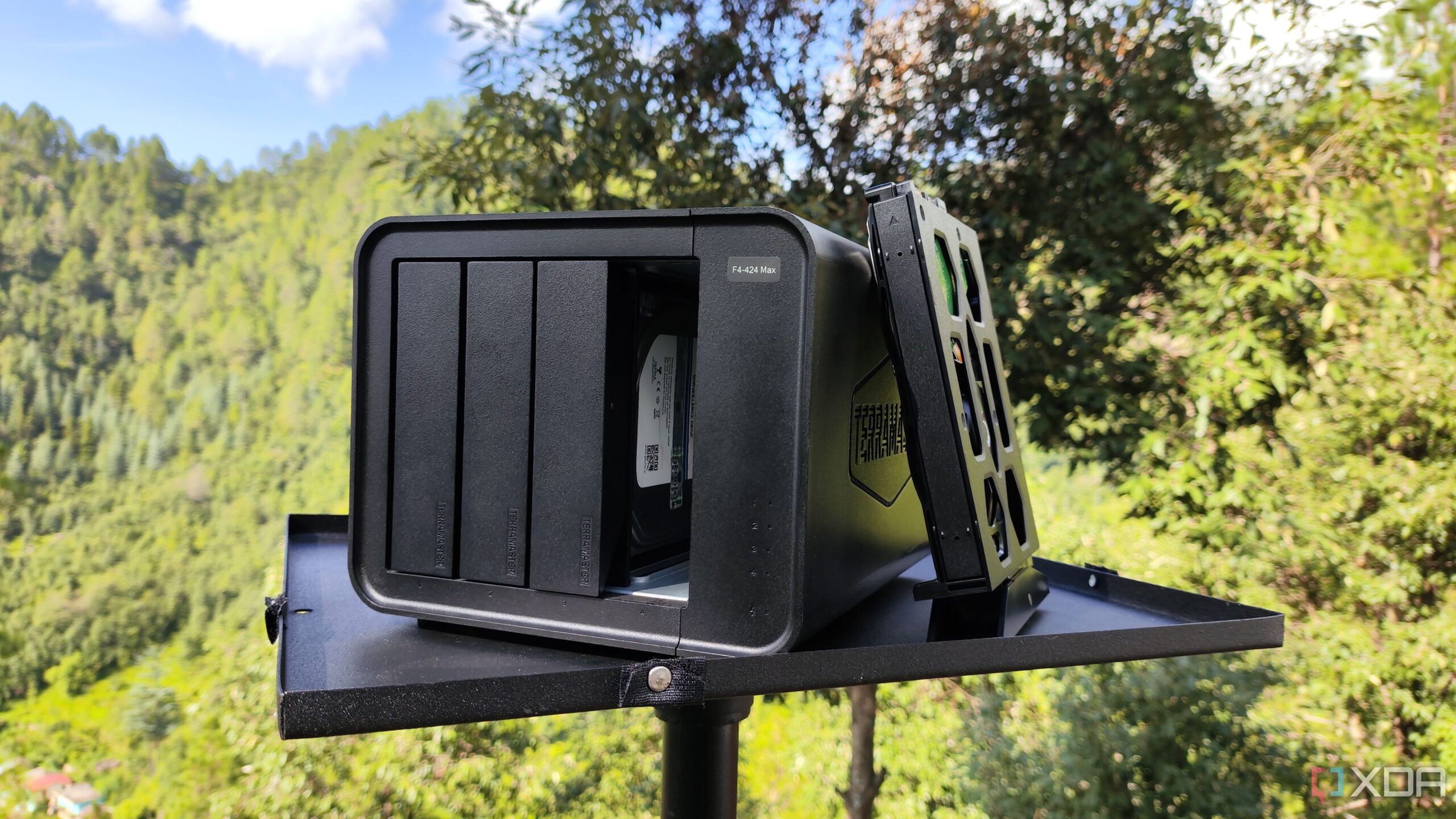It’s the software that turns that boring little box called network-attached storage (NAS) into something useful — something magical. It happens quite often that people who have just got their first NAS ask me about the apps they should install. While most pre-built NAS models come with a whole software suite built in, you still need a bunch of third-party apps to make the most of it.
I have tried dozens of apps that have now become a part of my routine, and I can’t imagine living without them. On the other hand, there are apps that I warn people against. So here is a list of my favourite — and some not-so-favourite — apps that every new NAS user should know about.
7
👍 Jellyfin
It feels like a breath of fresh air
If you have ever used Plex, Jellyfin will feel like a step up — and it’s not just about the price barrier. Jellyfin gives you all the perks of Plex, including the ones the latter puts behind a paywall, without any fee. That liberation extends to how easily you can use the app without restrictions.
Sure, the UI may not feel as polished as Plex’s, but Jellyfin’s gains far outweigh that little drawback. It has saved me a lot of frustration just by not throwing pop-ups in my face asking me to pay to access a feature. And it’s so relieving that my data isn’t being fed into some marketing algorithm.
6
👍 Syncthing
Cut the cloud — literally
Like a lot of people, I used to depend on cloud services like Google Drive and Dropbox to sync files between all my devices — not counting the storage space I had to rent from them. But you don’t need any of that if you set up Syncthing, which establishes a direct sync link between your devices.
That means you don’t have to depend on an intermediary server (one that someone else controls) to handle your sync tasks. This open-source and completely free tool is available for a whole host of desktop and NAS platforms. Once you set it up, it stays in the background, reliably syncing your files in real time.
5
👍 Photoprism
A nice home for your photos
I take a lot of photos — mostly of my family and friends, but sometimes random stuff too. And I must keep them all. Even if I have ten versions of the same shot, they have to stay. Photoprism helps me manage all this clutter without having to manually do the work.
It’s a smart, Google Photos-like solution that uses AI to recognise faces and objects, making finding old shots ridiculously easy. The surprising part is that all of it runs locally on the NAS — no external servers involved.
4
👍 Nextcloud
Your own cloud storage
A NAS may often be touted as a cloud replacement, but it’s essentially just storage hardware. What actually turns it into cloud storage is software — and there is no better app to do that than Nextcloud. You can think of it as the industry standard for running your own Google Drive alternative — it’s that good.
It runs privately on your NAS to let you share files, collaborate on documents, and keep your calendar in sync across devices. You can even nerd out on Nextcloud’s app store, which has an infinitely long list of add-ons that can turn your NAS into a productivity powerhouse.
3
👍 Tailscale
Safety first, always
Remote access was the most intimidating part of using a NAS for me. And not just when I was new to it — I still double- triple-check everything when I try to open a new port or tinker with anything around remote access. Tailscale eliminates the need for all that and makes the process so much more user-friendly.
It creates a secure private network between your devices, so you can connect to your NAS from anywhere as if you’re on your home Wi-Fi. I feel so relieved using it that I cannot recommend it enough to people who are new to NAS and are figuring out remote access for themselves.
2
👎 OwnCloud
You don’t want more problems than you already have
OwnCloud was once a big name in self-hosted cloud storage, but when I tried it briefly, it felt stuck in 2015. The interface is clunky, and it lacks the community that Nextcloud has — an important requirement when you’re new to server setup. My brief use resulted in sync hiccups and plugin issues, so I recommend people stay away from it unless you have a very specific reason to pick it.
1
👎 Plex
Why settle for less?
Plex is an excellent tool and works super well with polished apps and a plug-and-play setup. But over the years, Plex has become quite ad-heavy and is focusing more on its own streaming services, which are expanding by the day. Plex is the default for anyone who wants to host a media server, but Jellyfin is equally capable and far less restrictive or greedy. Since you’re just building your setup, why not start with something better from the get-go?
Expand your NAS’s role at home
It’s an exhilarating feeling to own and set up your own server from scratch. But it’s equally easy to get overwhelmed with all the little choices you have to make, double-check each one of them on Reddit and YouTube tutorials, and have so many things to do with your new NAS. You can start with these apps when you get your new NAS, but over time, you will move on to more advanced tools and apps that match your growing experience level.
- CPU
-
Intel Core i5-1235U
- Memory
-
8GB DDR5 non-ECC SODIMM (up to 64GB)
- Drive Bays
-
4 HDD bays + 2 NVMe SSD slots
- Ports
-
2x USB Type-A (10Gbps), 1x USB Type-C (10Gbps), 1x HDMI 2.0, 2x 10GbE RJ45
The TerraMaster F4-424 Max is a premium hybrid NAS enclosure that combines a solid Intel Core i5-1235U processor with ultra-fast 10GbE ports and ample storage capacity. It also supports up to 64GB RAM and is as amazing for home lab workloads as it is for storing your precious data,


